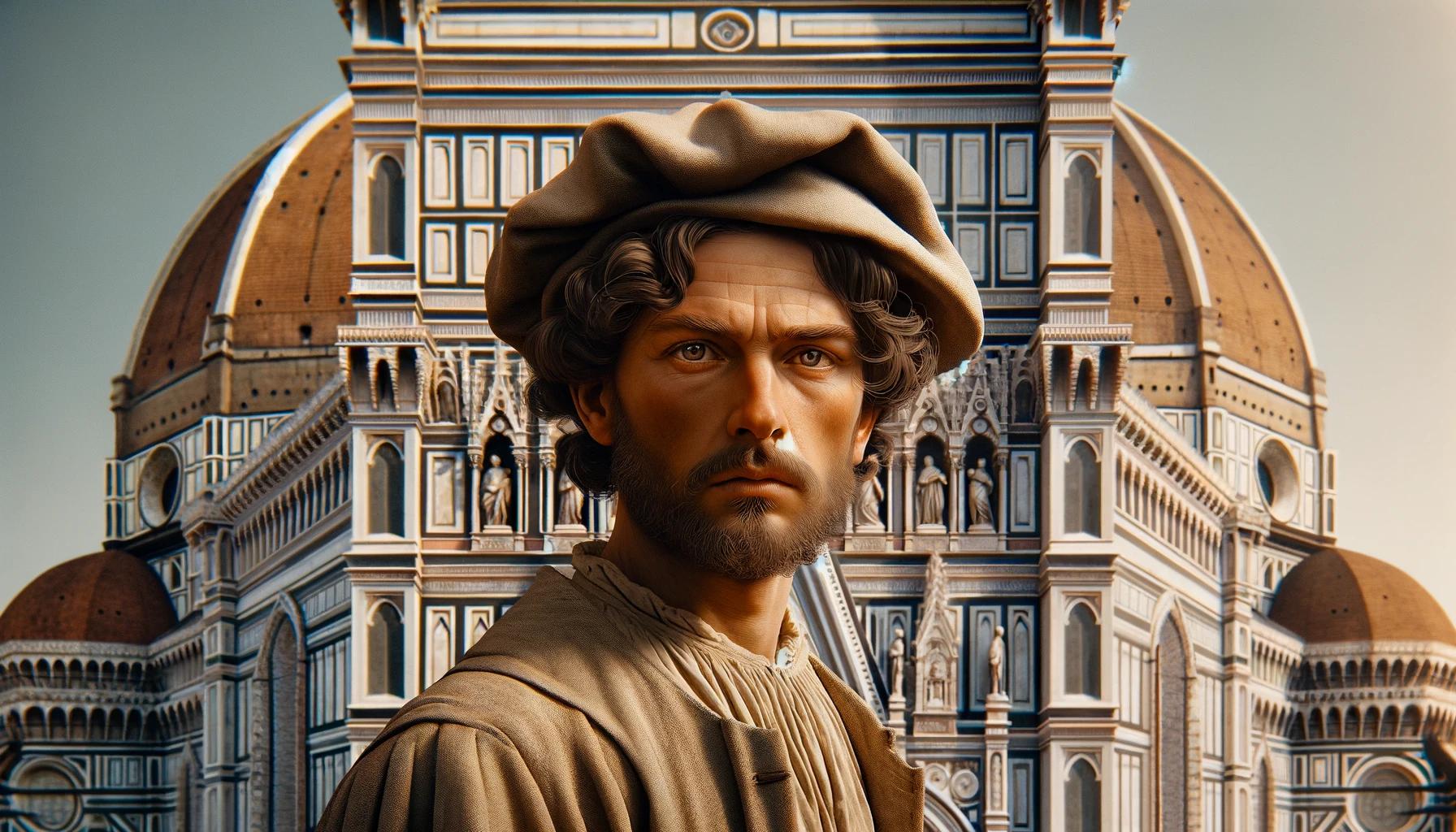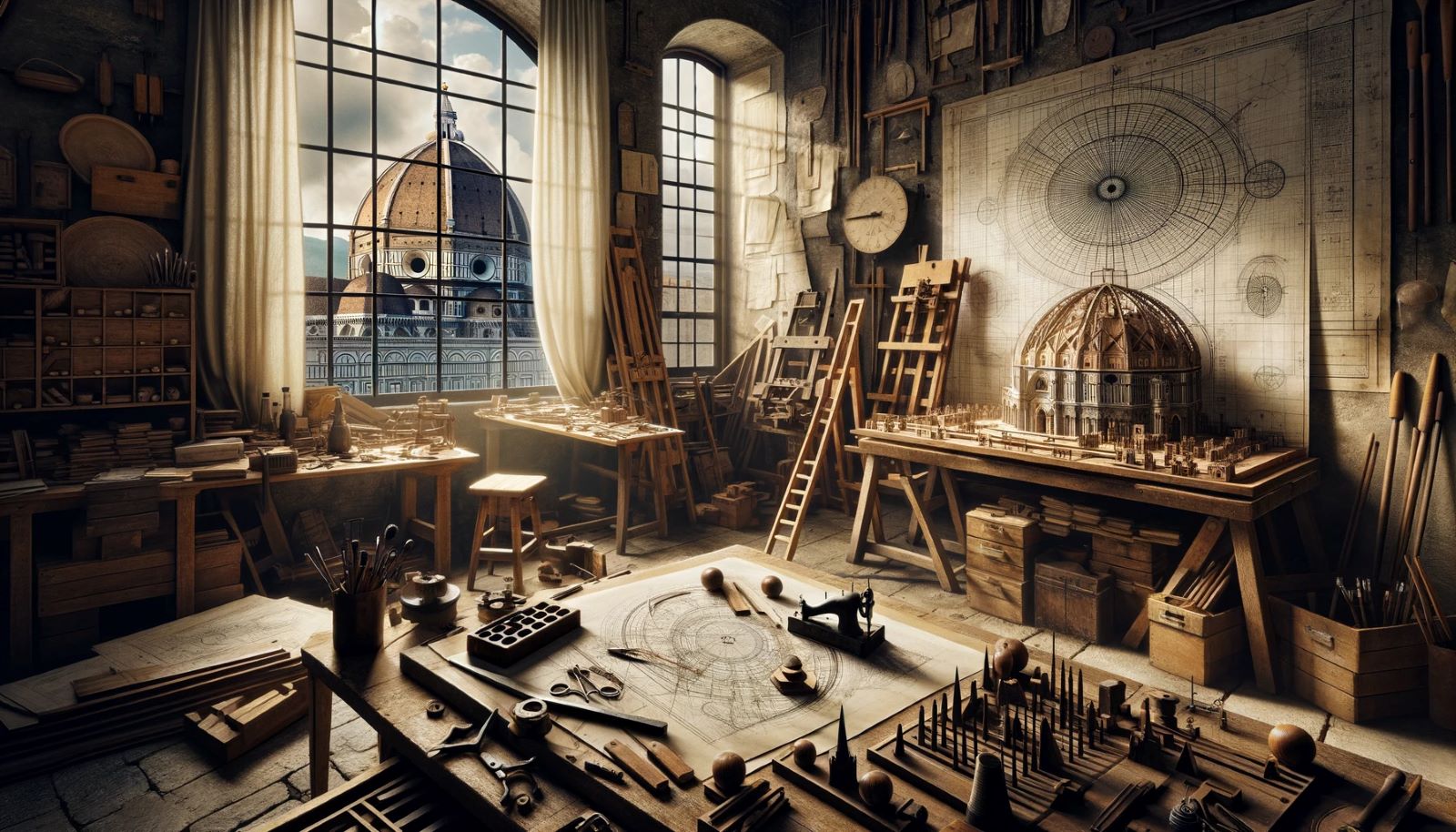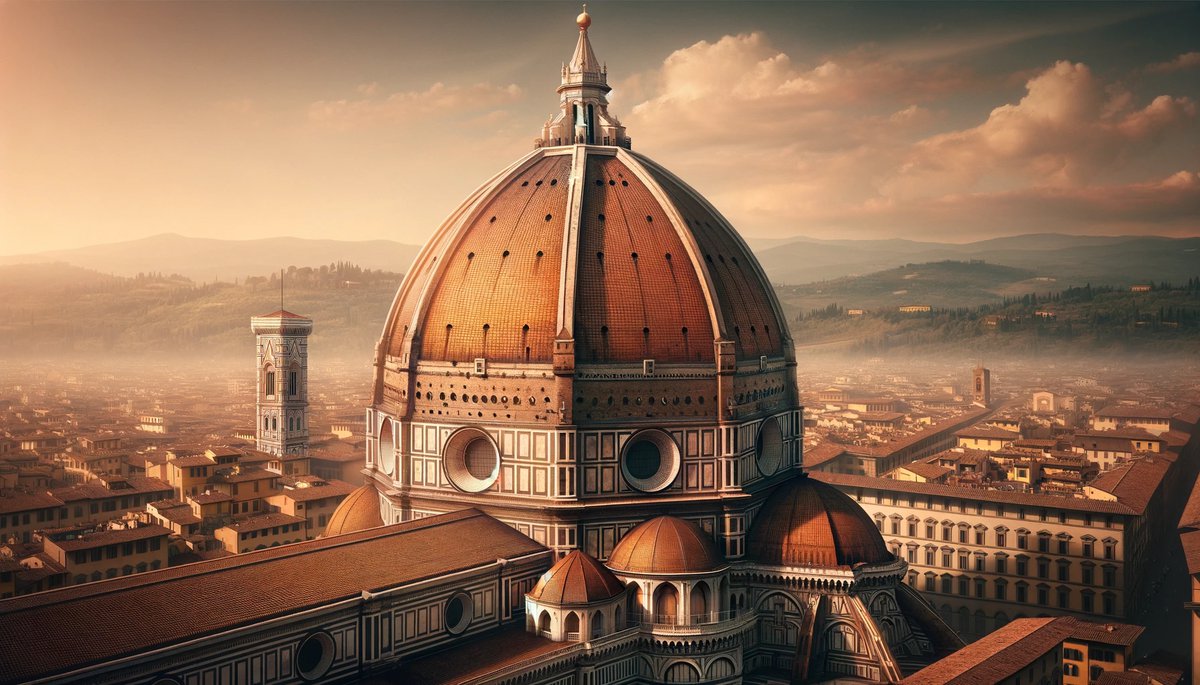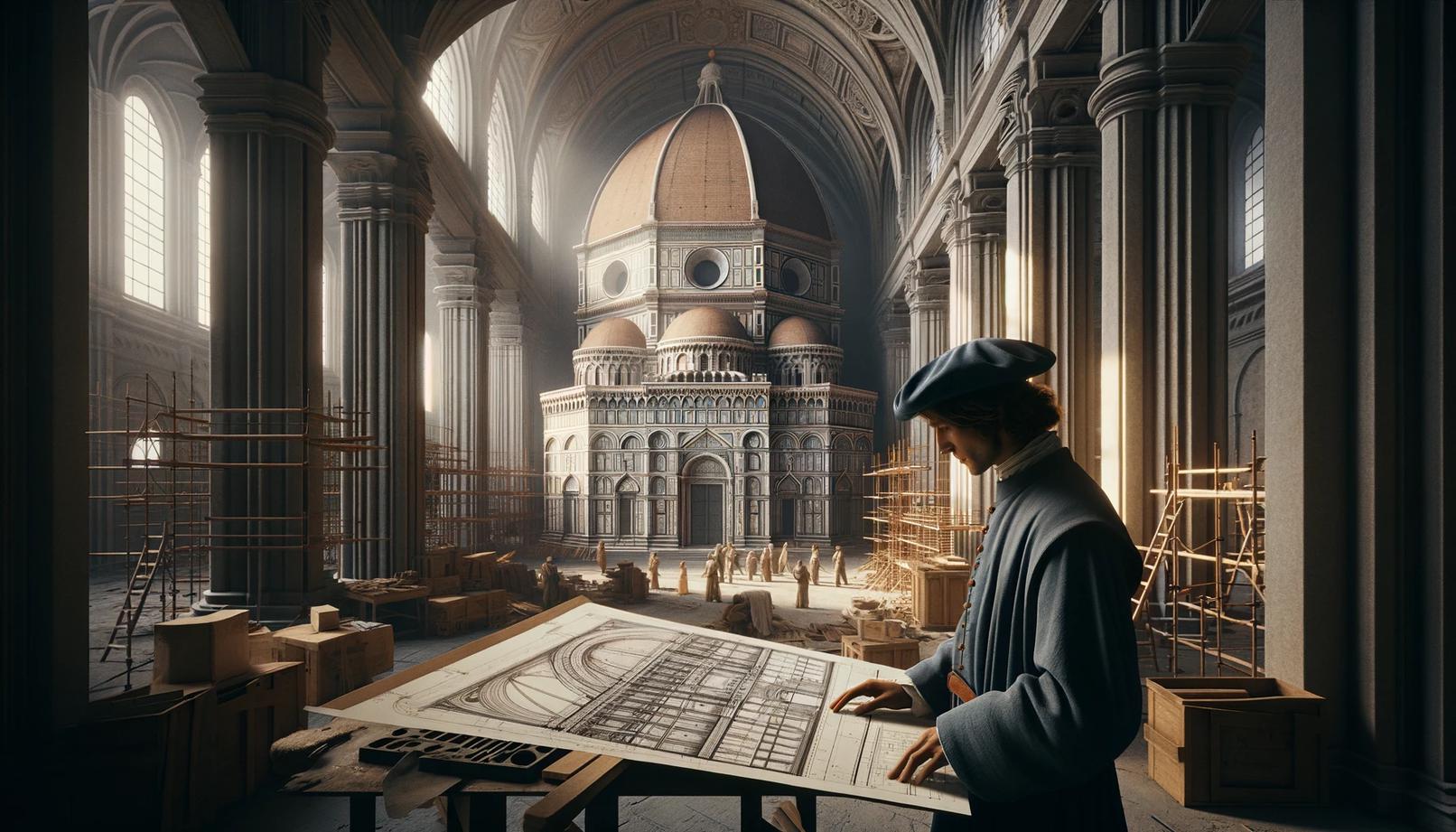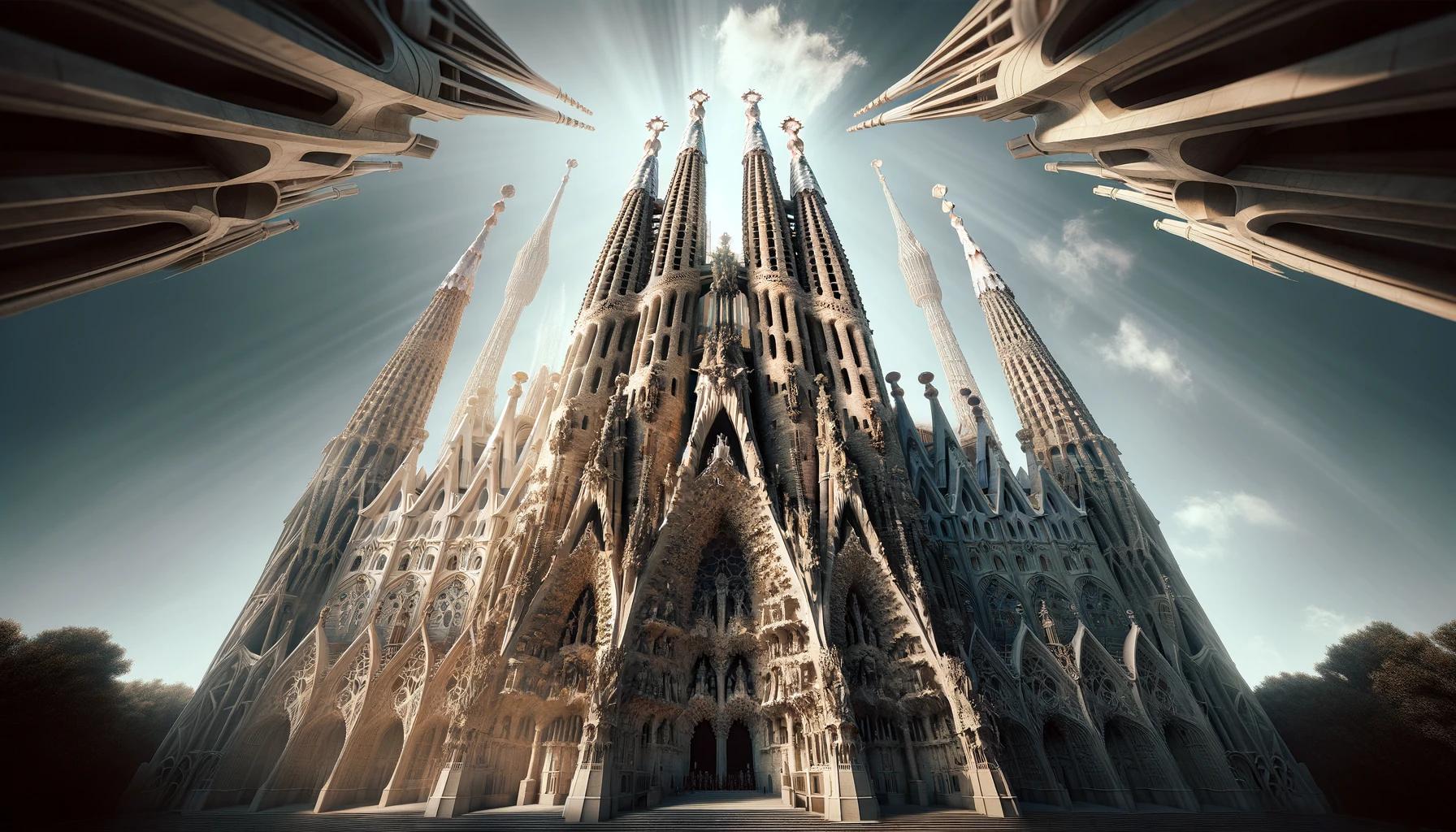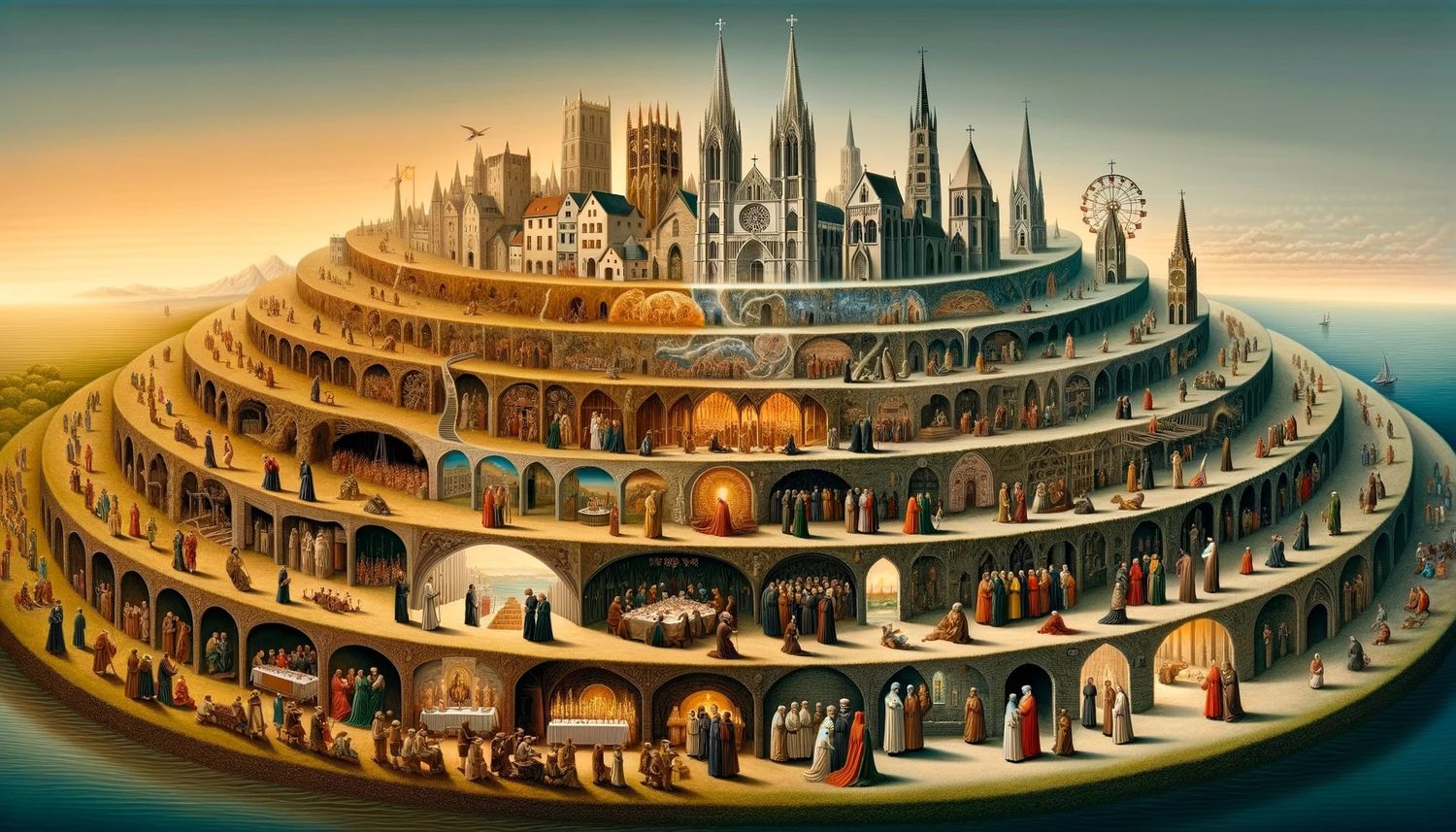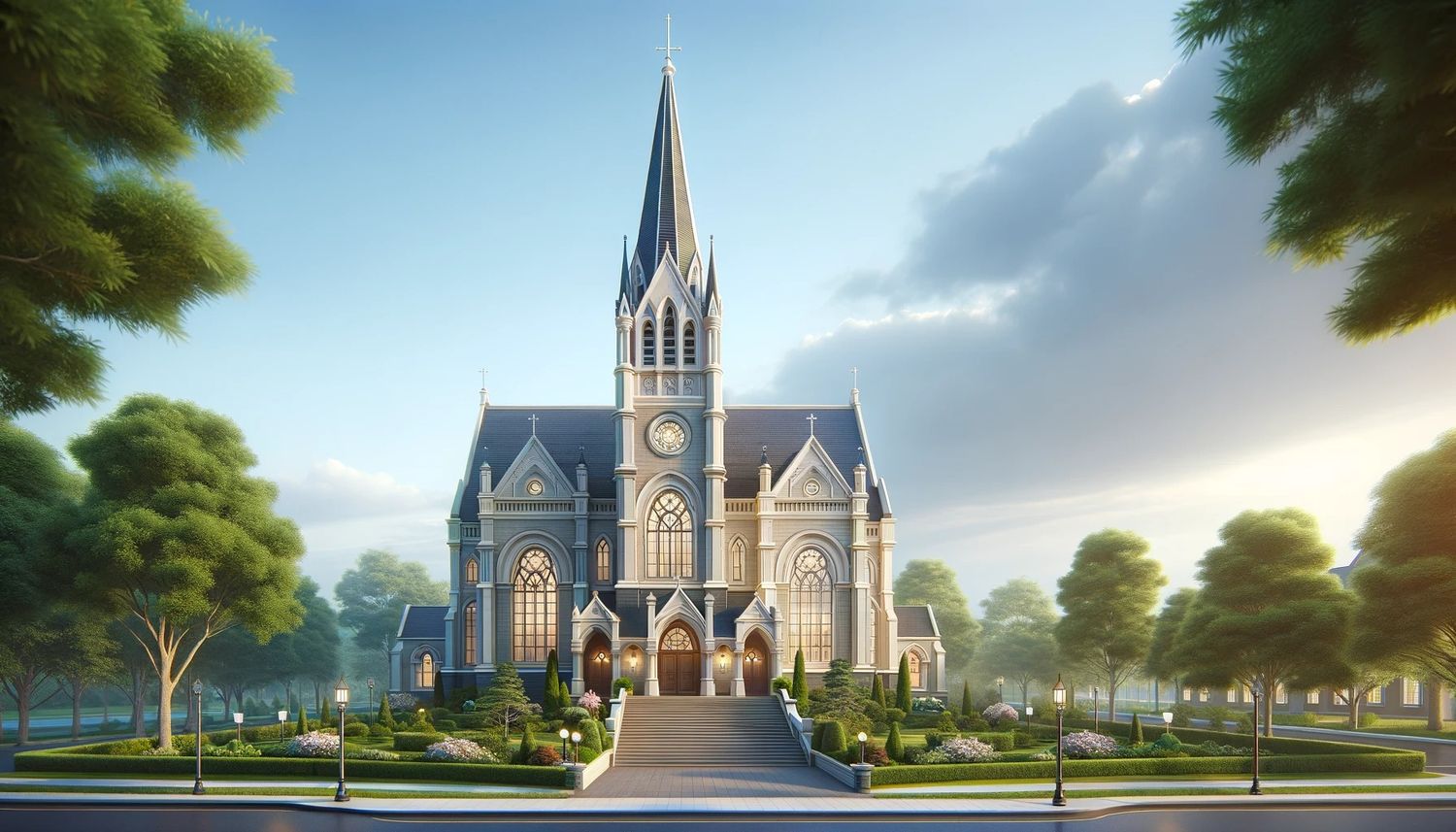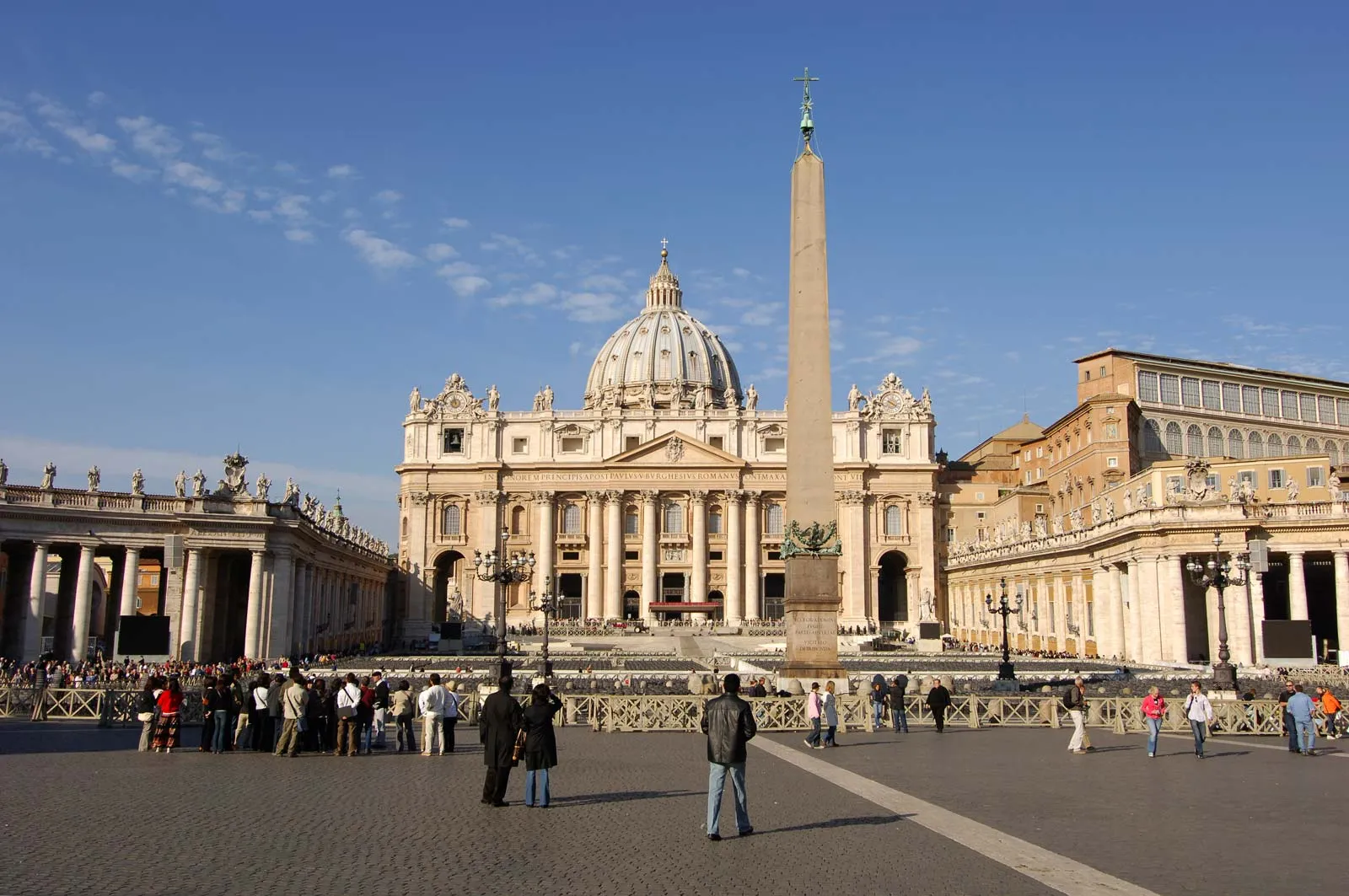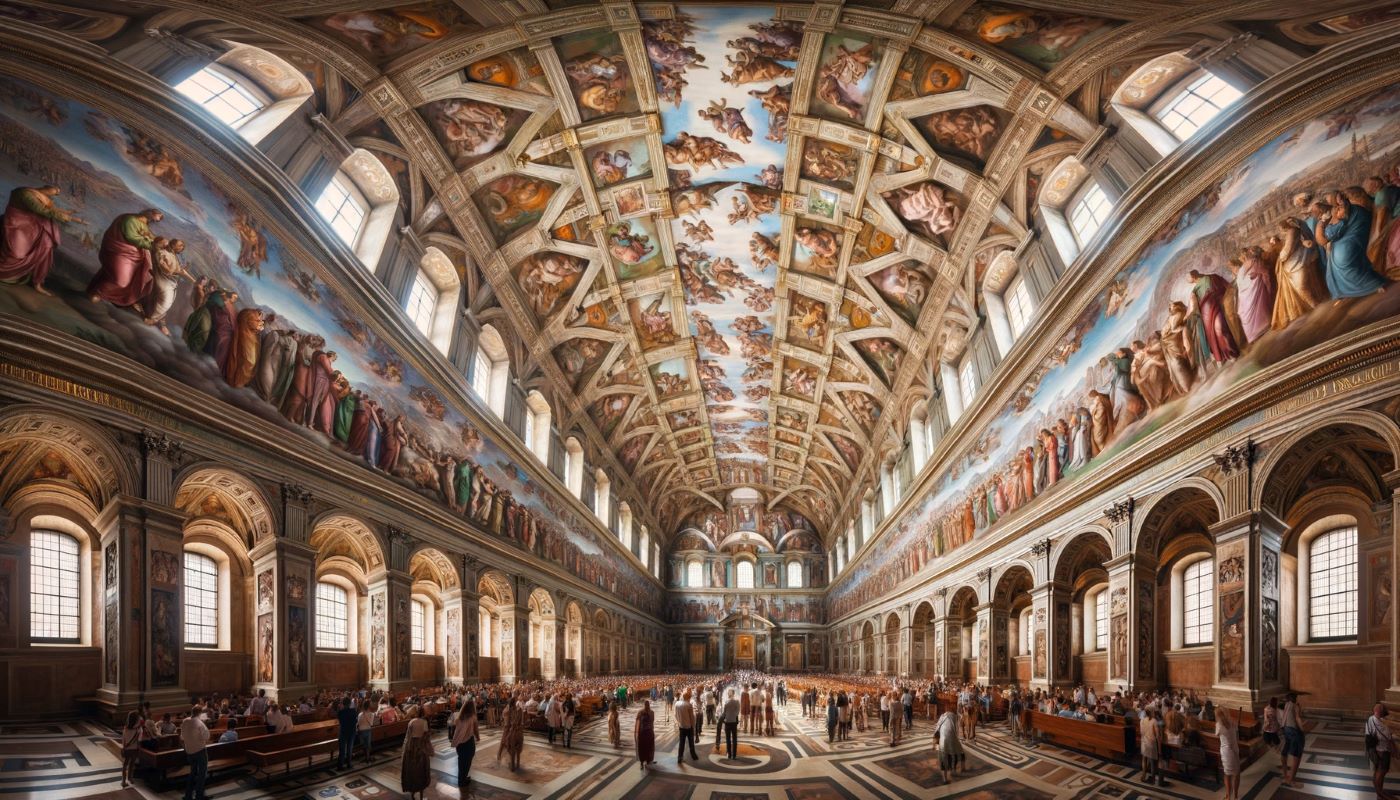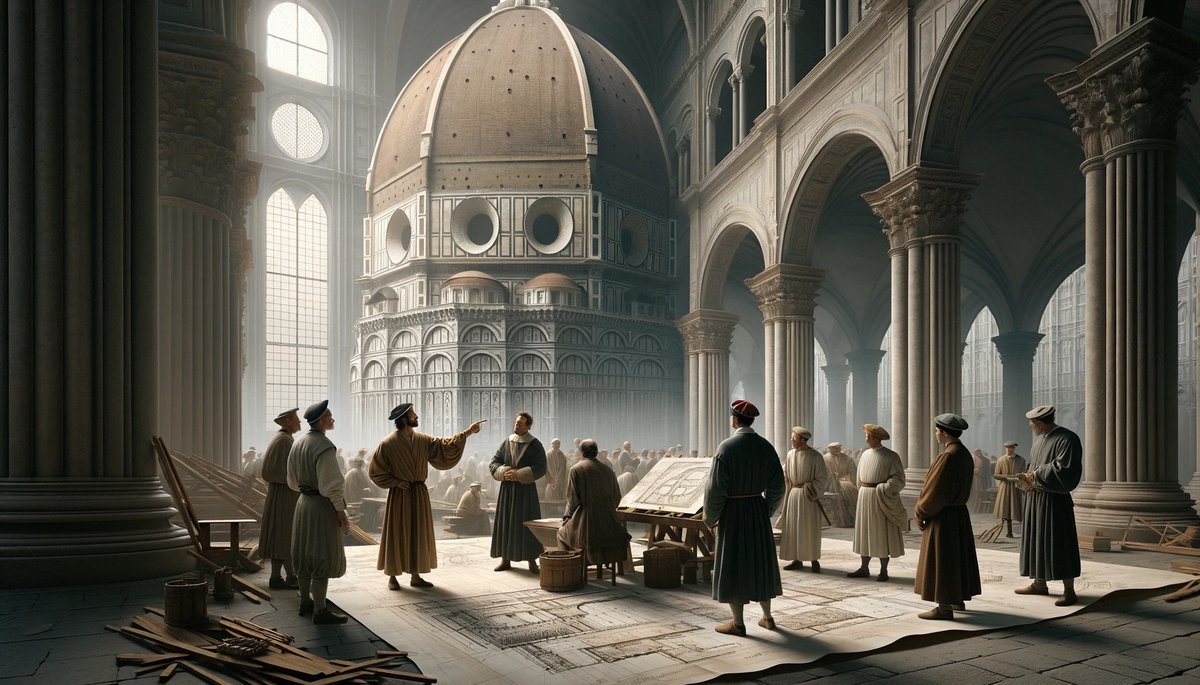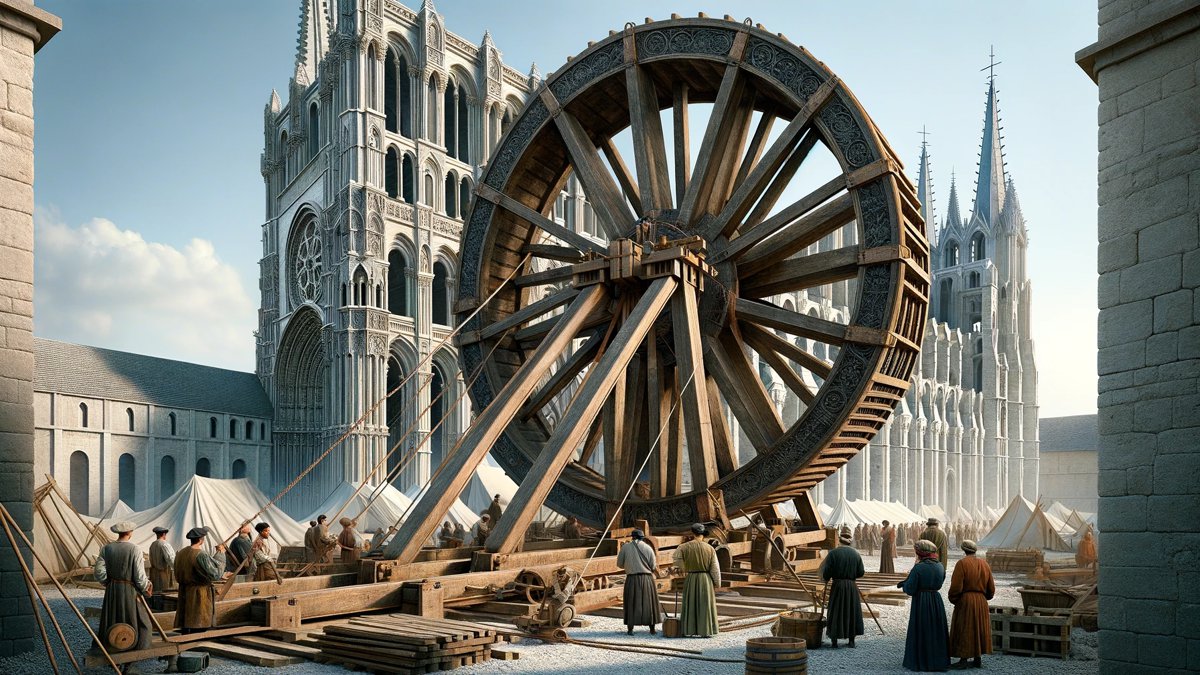Home>Arts and Culture>How Big Is The Cathedral Of Florence
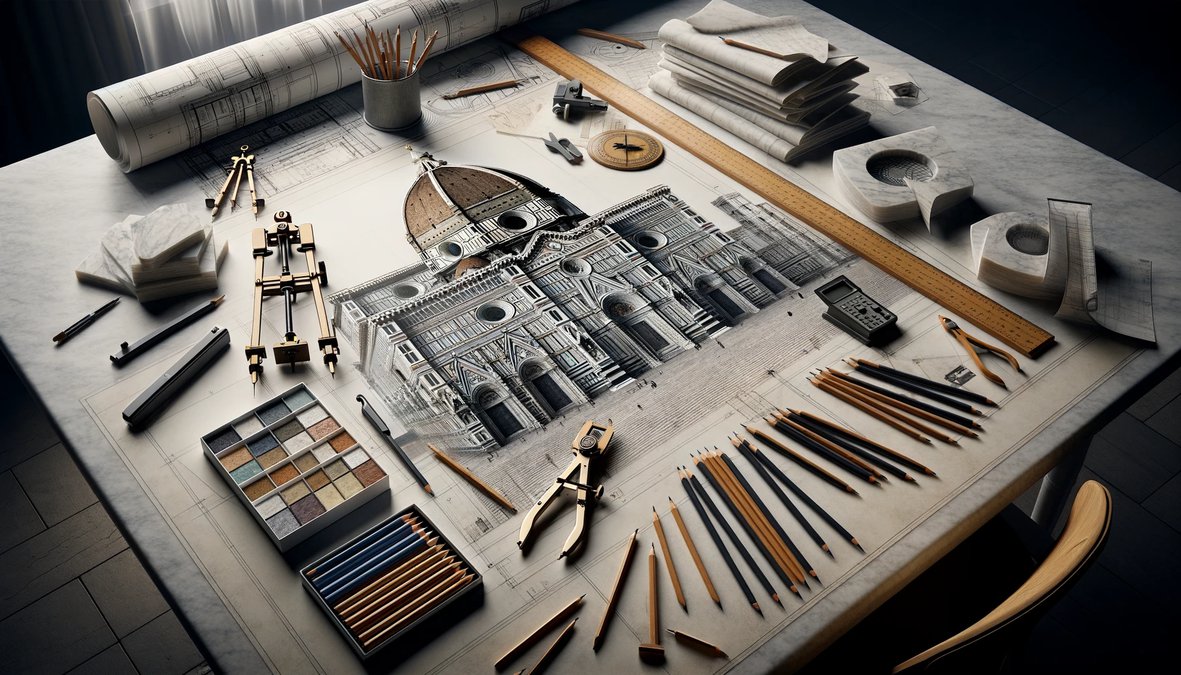

Arts and Culture
How Big Is The Cathedral Of Florence
Published: February 16, 2024
Jason DeRose, Managing Editor at Christian.net, uses his expertise in religion and journalism to deepen understanding of faith's societal impacts. His editorial leadership, coupled with a strong academic background, enriches the platform’s diverse content, earning him recognition in both journalism and religious circles.
Discover the awe-inspiring dimensions of the Cathedral of Florence, a masterpiece of arts and culture. Uncover the grandeur of this iconic architectural wonder.
(Many of the links in this article redirect to a specific reviewed product. Your purchase of these products through affiliate links helps to generate commission for Christian.net, at no extra cost. Learn more)
Table of Contents
Introduction
The Cathedral of Florence, also known as the Cattedrale di Santa Maria del Fiore, is a magnificent symbol of the city's rich cultural heritage and architectural prowess. This iconic structure stands as a testament to the ingenuity and artistic brilliance of the Renaissance period. The cathedral, with its striking dome and ornate facade, continues to captivate visitors from around the world, drawing them into a world of awe-inspiring beauty and historical significance.
The Cathedral of Florence holds a special place in the hearts of both locals and tourists, serving as a focal point of the city's skyline and a beacon of artistic and religious devotion. Its grandeur and historical significance make it a must-see destination for anyone with an appreciation for art, history, and architecture. As we delve into the history, architectural features, dimensions, art, and influence of this remarkable structure, we will uncover the captivating story of the Cathedral of Florence and its enduring legacy.
Read more: How Big Is Ely Cathedral
History of the Cathedral
The history of the Cathedral of Florence is a tapestry woven with the threads of artistic vision, engineering marvels, and religious devotion. The story begins in the late 13th century when Arnolfo di Cambio, a renowned architect, laid the foundation for this ambitious project. The cathedral was envisioned as a grand tribute to the Virgin Mary, reflecting the city's deep-rooted religious fervor and its aspiration for architectural magnificence.
Construction of the cathedral spanned centuries, with each phase bearing the mark of different architects and craftsmen. The iconic dome, designed by Filippo Brunelleschi, stands as a testament to human ingenuity and remains a marvel of Renaissance engineering. The cathedral's facade, adorned with intricate marble panels and statues, reflects the artistic mastery of its creators.
The cathedral's history is also marked by the competition held to design the dome, a testament to the era's spirit of innovation and artistic rivalry. Brunelleschi's revolutionary double-shell design, which ingeniously utilized self-supporting bricks, ultimately secured his place in history as the mastermind behind the awe-inspiring dome.
Throughout its history, the cathedral has weathered wars, political upheavals, and the passage of time, emerging as a resilient symbol of Florence's cultural identity. Its construction reflects the evolution of architectural styles, from the Gothic influences of its early years to the harmonious blend of Renaissance and Baroque elements in its final form.
The Cathedral of Florence stands as a living testament to the city's enduring spirit and its unwavering commitment to artistic and religious expression. Its history is a testament to the resilience and creativity of the human spirit, and its legacy continues to inspire awe and admiration in the hearts of all who behold its grandeur.
Architectural Features
The Cathedral of Florence stands as a masterpiece of architectural ingenuity, boasting a harmonious blend of Gothic, Renaissance, and Baroque elements that collectively define its awe-inspiring presence. The cathedral's exterior is adorned with intricate marble panels, statues, and decorative motifs, showcasing the artistic prowess of the craftsmen who dedicated themselves to its creation. The facade, with its striking pink, white, and green marble, exudes a sense of grandeur and elegance, inviting visitors to marvel at its ornate beauty.
One of the most iconic features of the cathedral is its magnificent dome, a marvel of engineering and architectural innovation. Designed by Filippo Brunelleschi, the dome stands as a testament to human creativity and technical prowess. Its double-shell design, utilizing self-supporting bricks, represents a revolutionary achievement in architectural history. The dome's imposing presence and graceful curvature serve as a fitting crown for the cathedral, drawing the gaze of onlookers and inspiring a sense of wonder at the ingenuity of its creators.
The interior of the cathedral is equally captivating, with its vast nave, soaring arches, and intricate stained glass windows. The space exudes a sense of grandeur and tranquility, inviting visitors to immerse themselves in its serene ambiance. The intricate details of the interior, including the stunning frescoes and ornate decorations, reflect the dedication of the artists and craftsmen who contributed to its splendor.
The bell tower, designed by Giotto di Bondone, stands as a testament to the Gothic architectural style, with its elegant design and decorative elements. The tower's intricate carvings and statues add a sense of verticality and grace to the cathedral complex, further enhancing its visual appeal and historical significance.
The architectural features of the Cathedral of Florence not only reflect the artistic and engineering achievements of their time but also serve as a timeless testament to human creativity and devotion. The cathedral's enduring beauty and historical significance continue to inspire awe and admiration, drawing visitors into a world of artistic splendor and cultural richness.
Dimensions and Measurements
The Cathedral of Florence stands as a monumental testament to human ambition and architectural prowess, boasting impressive dimensions and measurements that underscore its grandeur and historical significance. The cathedral's sheer size and scale serve as a testament to the vision and dedication of its creators, leaving an indelible impression on all who behold its awe-inspiring presence.
The cathedral's dimensions are truly remarkable, with its length spanning approximately 153 meters (502 feet) and its width measuring around 38 meters (124 feet). The imposing height of the cathedral's dome reaches an astounding 114.5 meters (376 feet), making it one of the largest domes in the world and a marvel of Renaissance engineering. The sheer magnitude of these measurements underscores the cathedral's commanding presence within the cityscape, drawing the gaze of visitors and instilling a sense of reverence for its architectural splendor.
The cathedral's interior further showcases its impressive dimensions, with the nave stretching over 153 meters (502 feet) in length and the central aisle rising to a height of approximately 23 meters (75 feet). The vastness of the interior space, accentuated by the soaring arches and intricate details, creates a sense of awe and tranquility, inviting visitors to immerse themselves in its timeless beauty and spiritual ambiance.
The bell tower, designed by Giotto di Bondone, stands at an impressive height of 82 meters (269 feet), adding to the cathedral complex's verticality and visual impact. The tower's elegant proportions and ornate decorations further contribute to the overall magnificence of the architectural ensemble, serving as a testament to the skill and artistry of its creators.
The dimensions and measurements of the Cathedral of Florence not only reflect the physical scale of the structure but also embody the aspirations and achievements of the Renaissance era. The cathedral's monumental proportions and meticulous design continue to inspire wonder and admiration, inviting visitors to contemplate the enduring legacy of human creativity and devotion embodied within its majestic walls.
Art and Decoration
The Cathedral of Florence stands as a testament to the artistic mastery and creative expression of the Renaissance period, boasting a wealth of exquisite art and decorative elements that adorn its interior and exterior. From stunning frescoes to intricate sculptures, the cathedral's artistic embellishments reflect the dedication and skill of the craftsmen and artists who contributed to its splendor.
The interior of the cathedral is a treasure trove of artistic marvels, with its vast nave adorned with breathtaking frescoes and ornate decorations. The renowned fresco of the Last Judgment, adorning the interior of the dome, is a masterpiece created by Giorgio Vasari and Federico Zuccari. This monumental work of art, spanning over 3,600 square meters, depicts scenes from the Book of Revelation, captivating visitors with its vivid colors and intricate details. The fresco serves as a visual symphony of religious narrative and artistic expression, inviting contemplation and awe.
The cathedral's interior also features a wealth of stunning stained glass windows, which bathe the space in a kaleidoscope of vibrant hues and ethereal light. These intricate windows, crafted by renowned artists such as Donatello and Lorenzo Ghiberti, depict biblical scenes and saints, adding a sense of spiritual grandeur to the cathedral's ambiance. The interplay of light and color through the stained glass creates a transcendent atmosphere, inviting visitors to immerse themselves in the cathedral's timeless beauty and contemplative serenity.
The exterior of the cathedral is equally adorned with exquisite sculptures and decorative elements, showcasing the artistic prowess of the Renaissance craftsmen. The cathedral's facade, with its intricate marble panels and statues, exudes a sense of grandeur and elegance, inviting visitors to marvel at its ornate beauty. The intricate details of the facade, including the stunning reliefs and decorative motifs, serve as a testament to the skill and dedication of the artists who contributed to its creation.
The Cathedral of Florence stands as a living canvas of artistic expression, inviting visitors to embark on a journey through the rich tapestry of Renaissance art and decoration. Its interior and exterior serve as a testament to the enduring legacy of human creativity and devotion, captivating the hearts and minds of all who behold its timeless splendor.
Read more: What Is Florence Cathedral
Importance and Influence
The Cathedral of Florence holds profound importance as a cultural and architectural icon, exerting a far-reaching influence that extends beyond its physical presence. As a testament to the artistic and engineering achievements of the Renaissance era, the cathedral stands as a symbol of human ingenuity and creative expression. Its enduring influence transcends time and borders, leaving an indelible mark on the world of art, architecture, and cultural heritage.
From an architectural standpoint, the Cathedral of Florence has served as a source of inspiration for countless architects and builders, influencing the design and construction of structures around the globe. The innovative engineering techniques employed in the creation of its iconic dome, particularly the double-shell design devised by Filippo Brunelleschi, have set a precedent for architectural innovation and technical mastery. The cathedral's harmonious blend of Gothic, Renaissance, and Baroque elements has influenced architectural styles and design principles, shaping the evolution of architectural aesthetics and engineering practices.
Beyond its architectural significance, the cathedral holds immense cultural and religious importance, serving as a spiritual and communal center for the people of Florence. Its role as a place of worship and reflection has fostered a sense of community and shared heritage, uniting generations in reverence for its timeless beauty and historical resonance. The cathedral's religious significance has also contributed to its enduring influence, inspiring pilgrims and visitors from around the world to seek solace and spiritual enlightenment within its hallowed walls.
The artistic legacy of the Cathedral of Florence extends to the realm of visual arts and craftsmanship, influencing the work of renowned artists and sculptors. The cathedral's interior, adorned with exquisite frescoes, stained glass windows, and sculptures, has served as a wellspring of inspiration for artists seeking to capture the transcendent beauty of religious narratives and human expression. The masterpieces housed within the cathedral have left an indelible imprint on the world of art, inspiring subsequent generations of artists to explore themes of faith, devotion, and the human experience.
In the broader context of cultural heritage, the Cathedral of Florence stands as a beacon of artistic and historical significance, drawing visitors from all corners of the globe to witness its timeless splendor. Its inclusion as part of the historic center of Florence, a UNESCO World Heritage site, underscores its universal value as a cultural treasure that transcends boundaries and speaks to the shared legacy of humanity.
The enduring importance and influence of the Cathedral of Florence serve as a testament to the enduring power of human creativity, devotion, and artistic expression. Its legacy continues to resonate across the realms of architecture, art, and cultural heritage, inspiring awe and reverence in the hearts of all who are touched by its timeless grandeur.
Conclusion
In conclusion, the Cathedral of Florence stands as a timeless testament to the enduring legacy of human creativity, architectural innovation, and artistic expression. Its rich history, spanning centuries of construction and artistic collaboration, reflects the unwavering dedication of countless craftsmen, architects, and visionaries who contributed to its splendor. From its awe-inspiring dimensions and monumental dome to its exquisite art and decorative embellishments, the cathedral embodies the pinnacle of Renaissance achievement and continues to captivate the hearts and minds of visitors from around the world.
The cathedral's enduring significance extends beyond its physical presence, serving as a source of inspiration and influence in the realms of architecture, art, and cultural heritage. Its innovative engineering techniques, particularly exemplified by the revolutionary dome designed by Filippo Brunelleschi, have left an indelible mark on architectural practices and continue to inspire contemporary builders and designers. The cathedral's harmonious blend of architectural styles has set a precedent for the integration of artistic and structural elements, shaping the evolution of architectural aesthetics and engineering principles.
Furthermore, the cathedral's cultural and religious importance has fostered a sense of community and shared heritage, uniting generations in reverence for its timeless beauty and historical resonance. As a place of worship and spiritual contemplation, the cathedral continues to serve as a beacon of solace and enlightenment, drawing pilgrims and visitors to experience its transcendent ambiance and artistic grandeur.
In the broader context of cultural heritage, the Cathedral of Florence holds universal significance, transcending boundaries and speaking to the shared legacy of humanity. Its inclusion as part of the historic center of Florence, a UNESCO World Heritage site, underscores its universal value as a cultural treasure that continues to inspire awe and reverence in the hearts of all who are touched by its timeless splendor.
In essence, the Cathedral of Florence stands as a living testament to the enduring power of human creativity, devotion, and artistic expression. Its legacy continues to resonate across the realms of architecture, art, and cultural heritage, inviting visitors to embark on a journey through the rich tapestry of Renaissance art and architectural marvels. As the cathedral continues to stand as a symbol of Florence's rich cultural heritage and architectural prowess, it will undoubtedly inspire awe and admiration for generations to come.

